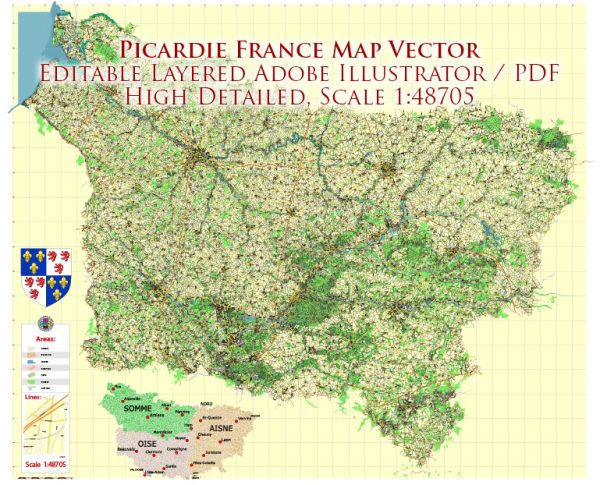Picardie is a historical region located in northern France, and its urban development has a rich history that spans centuries. Here is a brief overview of the history of urban development in Picardie:
- Roman Period: The history of Picardie can be traced back to Roman times when it was part of the Roman province of Gallia Belgica. During this period, several Roman towns and roads were established, contributing to the region’s urbanization.
- Medieval Period: In the medieval era, Picardie saw the emergence of many towns and cities as centers of trade and commerce. The region’s strategic location between the major cities of Paris and Brussels contributed to its economic importance. Amiens, one of the major cities in Picardie, became a significant religious and commercial center during this time.
- Hundred Years’ War: Picardie played a crucial role during the Hundred Years’ War (1337–1453) between England and France. The region witnessed significant military conflicts and suffered from the devastating effects of war. Many towns were affected, and the urban development faced setbacks during this turbulent period.
- Renaissance and Early Modern Period: The Renaissance brought about a renewed interest in art, culture, and architecture. In Picardie, this period saw the construction of impressive buildings and the development of urban spaces reflecting the architectural styles of the time.
- 17th and 18th Centuries: The 17th and 18th centuries were marked by further urban expansion and architectural developments in Picardie. However, like the rest of France, the region also faced challenges such as economic difficulties and social unrest.
- French Revolution: The French Revolution (1789–1799) had a profound impact on Picardie. The revolutionary ideals influenced urban planning and administration, leading to changes in the political and social structure of the region.
- Industrialization: The 19th century brought industrialization to Picardie, leading to the growth of urban centers as industries expanded. Towns like Saint-Quentin and Amiens saw increased industrial activity and population growth during this period.
- World Wars: Picardie suffered heavily during both World War I and World War II, with many towns and cities being heavily damaged or destroyed. The post-war period witnessed efforts to rebuild and modernize urban areas.
- Contemporary Period: In the latter half of the 20th century and into the 21st century, Picardie continued to undergo urban development, with a focus on infrastructure, modernization, and preserving historical heritage. Efforts were made to balance economic growth with environmental sustainability.
Today, Picardie’s urban areas reflect a blend of historical architecture and modern developments, showcasing the region’s rich and diverse history. The cities and towns of Picardie continue to play important roles in the cultural, economic, and social life of the region.


 Author: Kirill Shrayber, Ph.D.
Author: Kirill Shrayber, Ph.D.